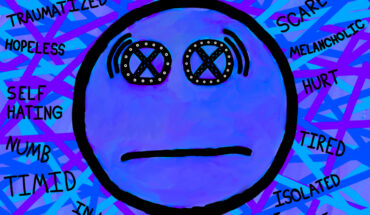What is seasonal depression and how can you cope?
BY LEIGH NORMAN, STAFF WRITER
As winter comes, is your mood steadily getting worse? Do you spend more time sleeping? Do you overeat? Then you may be suffering from seasonal affective disorder (SAD), or seasonal depression.
While SAD can occur in summer, it more commonly occurs in the winter. Symptoms include overeating, low energy, feeling hopeless and social withdrawal. Sufferers of this disease experience symptoms with the onset of winter and a full recovery when spring comes.
The National Institute of Mental Health (NIMH) does not consider SAD its own disorder. Instead, it is a type of depression, based on the change in seasons. This lack of distinction can make SAD difficult for therapists to pinpoint.
Psychology Today estimates that 10 million Americans suffer from the disorder every winter. It also states that rates among women are higher than they are for men, with one-in-four women affected by SAD. Worse yet, according to the NIMH, young adults have a higher risk of SAD than their older counterparts.
This means that college students in particular are at risk. However, SAD is rarely talked about on college campuses. One senior only heard of it by searching for the symptoms online. “It’s not really talked about at George Mason,” they said.
Should you see these symptoms in yourself or in a friend, there are options for treatment.
The senior found comfort in several methods. They recommended the book “Pull Yourself Together: Bridging the Communication Gap Between the Depressed and Those Who Love Them.” It breaks down depression and how to handle it, both for the person suffering from depression and their loved ones. The book is free for download from the Bearapy website.
Since SAD often makes people withdraw, the student made a point of reaching out to friends and family. They stuck to those who were “patient and warm” in this cold weather.
Therapy may be necessary for some. Cognitive Behavioral Therapy (CBT) helps the patient replace their negative, repetitive thoughts with positive ones. This process is called behavioral activation.
While at the doctor’s office, people suffering from SAD may also want to ask about vitamin D supplements. Levels of this vitamin may be low due to both lack of sunshine and poor nutrition. Studies have not reached a consensus on vitamin D’s effectiveness, though.
There is another way to get sunshine. Light box therapy is suggested across many studies as one of the main treatments for SAD. They imitate outdoor lighting, which may be sparse during the darker winter months, and can be purchased online for under $40. This allows students to take their mental health into their own hands. The Mayo Clinic offers an extensive list of criteria to consider before selecting one.
Winter may be coming, but you’ll be ready. Take note of how you are feeling and take steps to take care of your mental health. Spring will be here before you know it.




